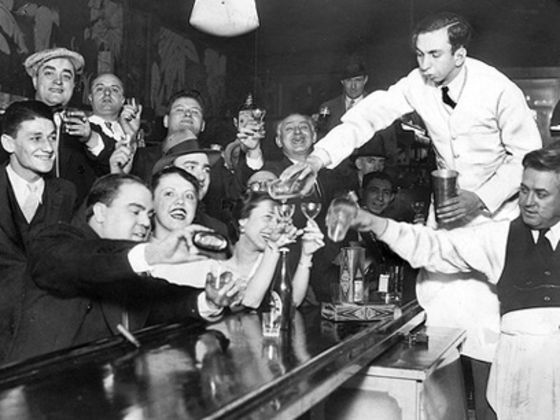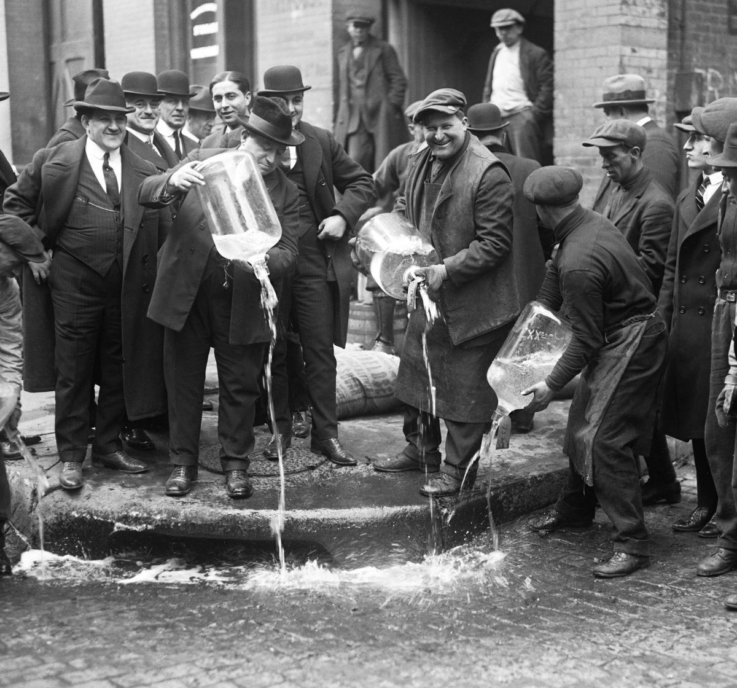Death & Drinks by Bathtub Gin
GIN STORIES: NAUGHT WHAT YOU THINK
Bathing in gin sounds like a truly wonderful idea. Although it’s questionable if it would in fact be good for your health, or your skin.
As playfully wicked as it sounds, the reality is not so decadent. ‘Bathtub gin’ is not a spa treatment or a luxury lotion. It refers to homemade liquor when liquor was hard to come by.

The 18th Amendment to the United States Constitution prohibited the ‘manufacture, sale or transportation of intoxicating liquors’ in 1919. The ruling came in reaction to the strength of The Temperance Movement which called for the outlaw of production and consumption of alcohol, giving birth to The Prohibition Era we know of today.
Prohibition created a criminal underworld and black market of ‘intoxicating liquor’ synonymous with the mafia and Al Capone, gangsters, bootleggers, speakeasies and gave ground to the cultural emergence of flappers and illicit jazz clubs.
The closure of bars and saloons across the country, forced many to find inventive ways to access alcohol.
When you couldn’t access gin in any other way, making gin at home in your bathtub would be an appealing idea.
Nevertheless, it is unlikely gin was actually made in bathtubs. Rather, the bathtub was where ‘moonshiners’ or illegal distillers stored their spirits for lack of anywhere else to keep them hidden from view.
Therefore, a more likely and correct interpretation of ‘bathtub gin’ is simply: homemade spirits made in novice conditions.
We think of it as a glamourous time. But there was nothing glamourous about ‘bathtub gin’.
Some called it poison, others potent, and many unpalatable. The illegal makers did their best to make alcohol with limited resources and used anything and everything to make it resemble the good stuff they could no longer drink. To hide the bad taste of their crude distillations, they used various infusions, oils and botanicals, but it was still pretty toxic stuff.
In fact, some of the infusions were incredibly toxic; dead rats and rotten meat were sometimes added to moonshine to try and recreate the aged barrel flavours in bourbon. Others were struck blind and as many as 50,000 were believed to have died from bathtub gin or illicit moonshine, also known as ‘rotgut whiskey’.
The Smithsonian provides a typical recipe for how the bootleggers replicated gin:
“Take some alcohol, thin it with water, add glycerin and juniper oil, and voila – gin!”
Thanks to the creativity of bar tenders in speakeasies at the time, the horrendous quality of ‘bathtub gin’ sold in their venues propagated some of the most delicious cocktails we enjoy today.
The Bee’s Knees, Gin Rickey, The Last Word, French 75 and The Southside are examples of drinks developed to mask the unpleasant taste of the bootleg liquor being peddled during Prohibition.
Cocktail culture today owes a lot to the poorly made spirits of the early 20th century. Fortunately, our cocktail experience today is immensely improved on the cocktails of yesteryear due to the quantity of high quality of spirits produced right across the globe.
Prohibition and bathtub gin are no longer part of our daily lexicon, but they sure did deliver us some delectably elegant drinks we can be thankful for.











